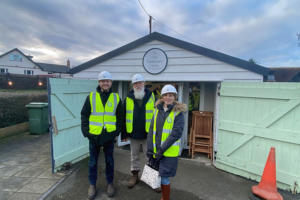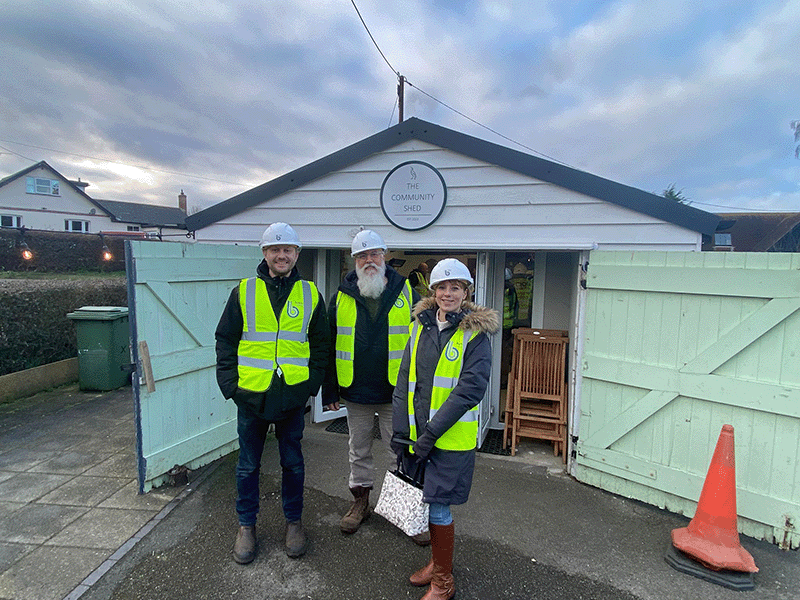
By John Philpot
Community Energy Pathways energy adviser
 This week I went behind the scenes at a social housing development in Purleigh, Essex that is undergoing a major retrofit to make the homes much more energy-efficient. My visit was hosted by Moat, Breyer Renew and the Chartered Institute of Building (CIOB).
This week I went behind the scenes at a social housing development in Purleigh, Essex that is undergoing a major retrofit to make the homes much more energy-efficient. My visit was hosted by Moat, Breyer Renew and the Chartered Institute of Building (CIOB).
Moat is a housing association that provides affordable homes for people across south-east England. Currently 484 of its homes are eligible for retrofits – additional properties can be upgraded, but residents need to give their approval, and amazingly not all of them are convinced!
To give an idea of the scale of the challenge facing the UK, 1.9m homes owned by housing associations need to reach a minimum energy performance certificate (EPC) rating of C by 2035. That amounts to 520 retrofits per day!
 I was able to see inside homes that have benefited from a combination of air source heat pumps, solar photo-voltaic (PV) panels, solar thermal panels, triple-glazed windows and cavity wall insulation. All the properties in this scheme have been brought up to EPC level C, from an average base of F, which is a big improvement for residents.
I was able to see inside homes that have benefited from a combination of air source heat pumps, solar photo-voltaic (PV) panels, solar thermal panels, triple-glazed windows and cavity wall insulation. All the properties in this scheme have been brought up to EPC level C, from an average base of F, which is a big improvement for residents.
Key learning points for me:
- Seeing and feeling how warm the properties were with the new measures in place, it was a cold day (9ºC) but windows were open in most homes.
- Seeing how quiet, efficient and compact the air source heat pumps were. Residents who were used to gas boilers had clearly been shown how to use the new heat pumps correctly, which is very important.
- Realising that entire buildings can be retrofitted with minimal disruption for residents.
- Realising that homes built nearly 100 years ago can be fitted with a range of measures to improve their energy efficiency within a budget.
- Noting that air source heat pumps do not need to be logged with the distribution network operator (DNO). This is a concern – a lack of reliable data could cause grid capacity issues for the DNO in the future.
The visit gave me the confidence to tell people what it is really like to have measures installed under grant funding and the tangible, positive impact it will have on their lives. This is an important point when interacting with the public and trying to counter disinformation!
My visit was rounded off with tea, cake and sandwiches at the local community shop – always a good way to finish an event!

John Philpot with Les Flack, a friend who was interested to see what measures he could install in his home and Imogen Kay, Energy Champions Co-ordinator at Maldon District Council

